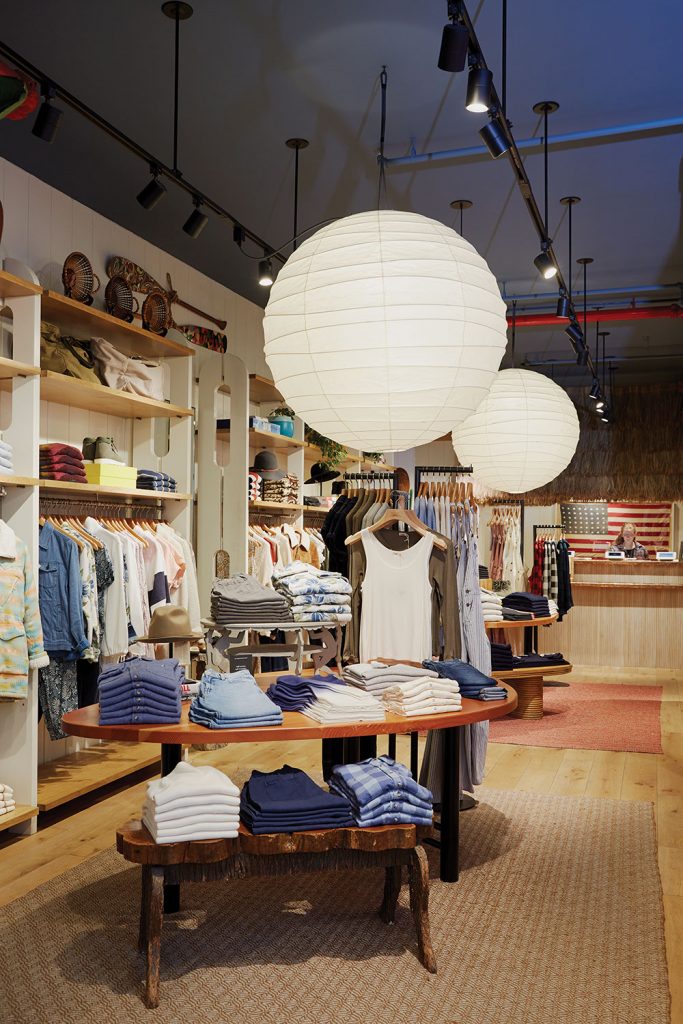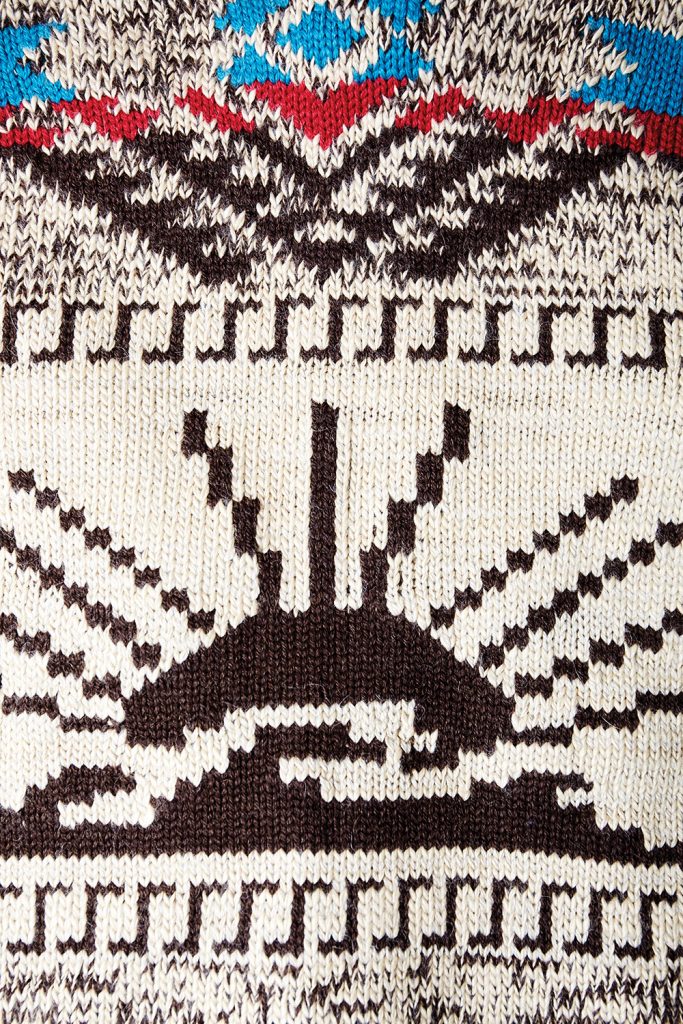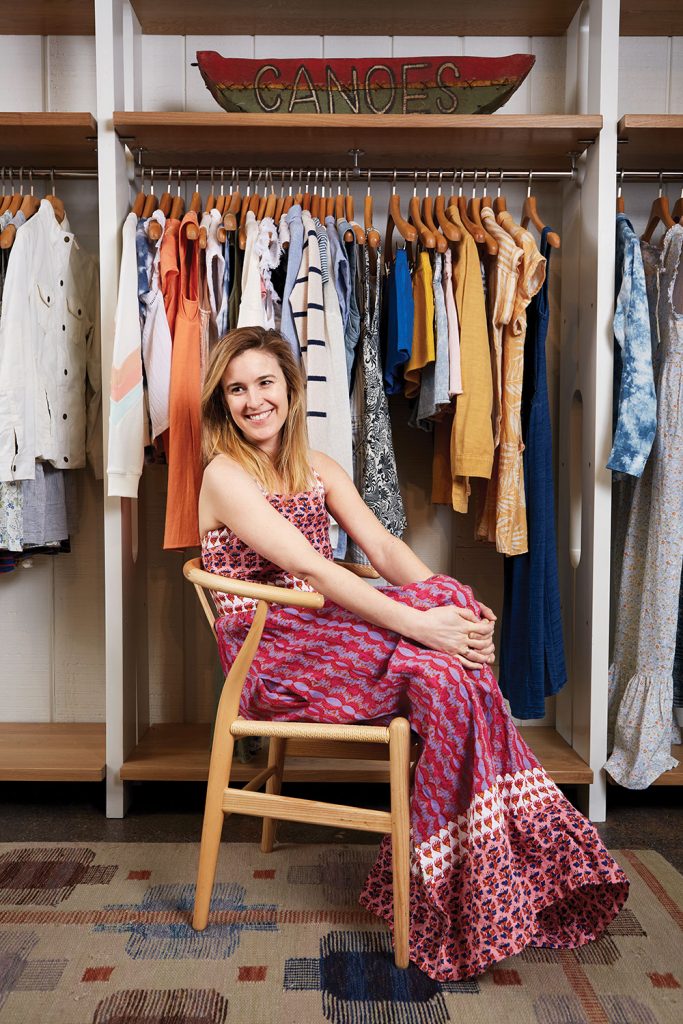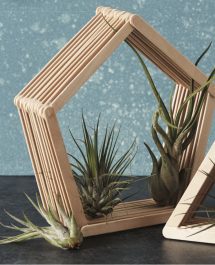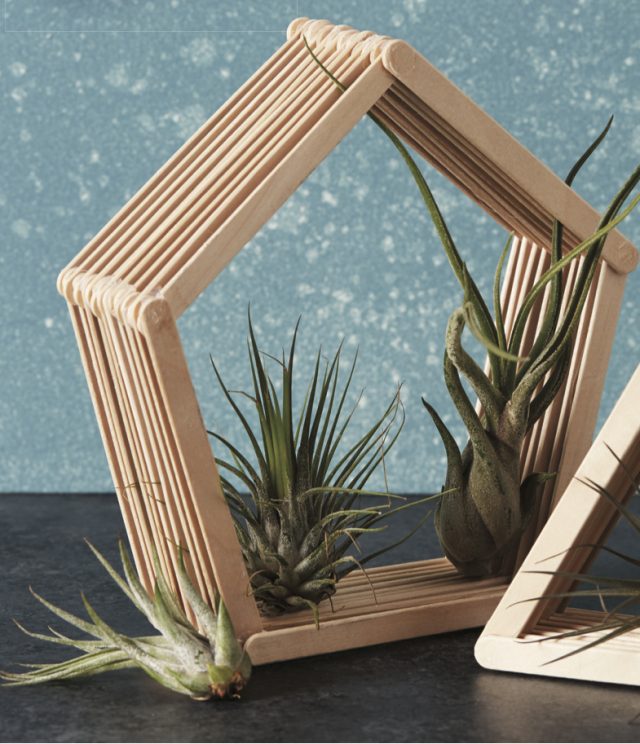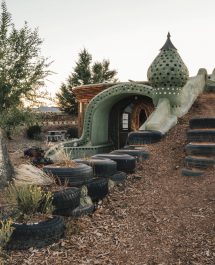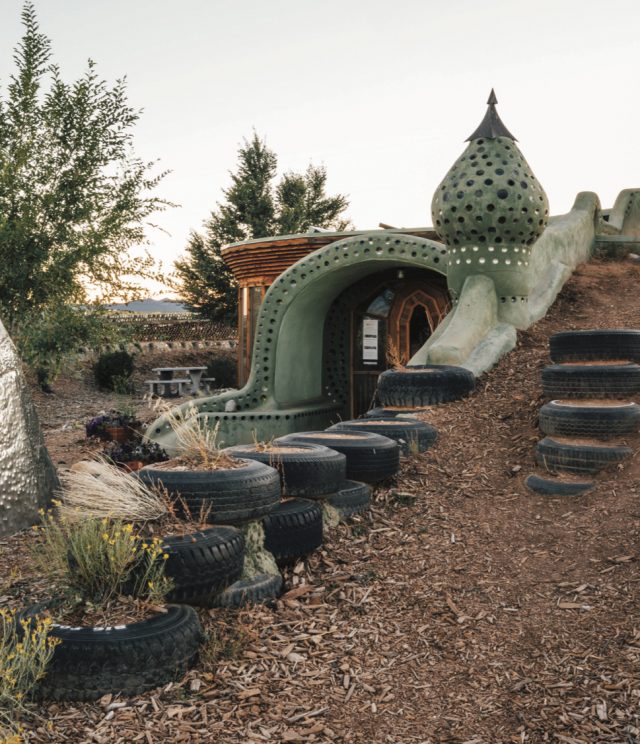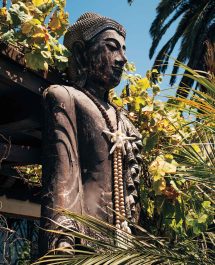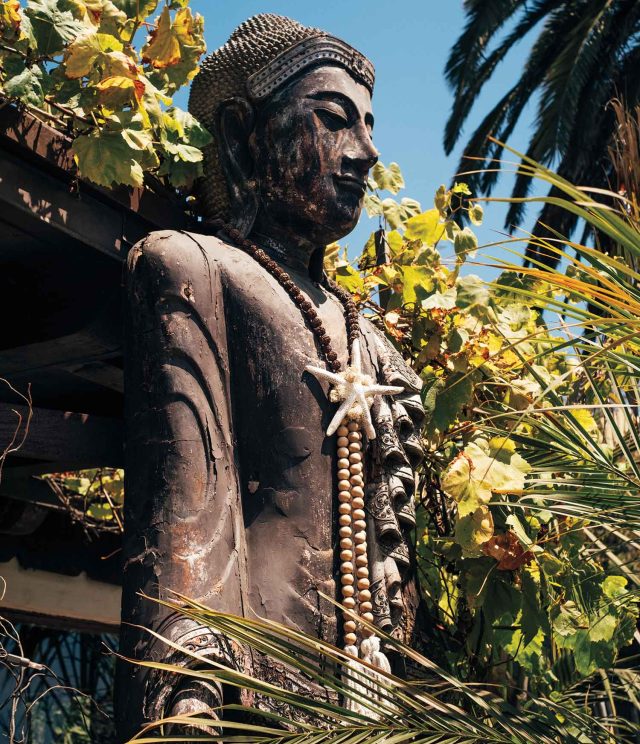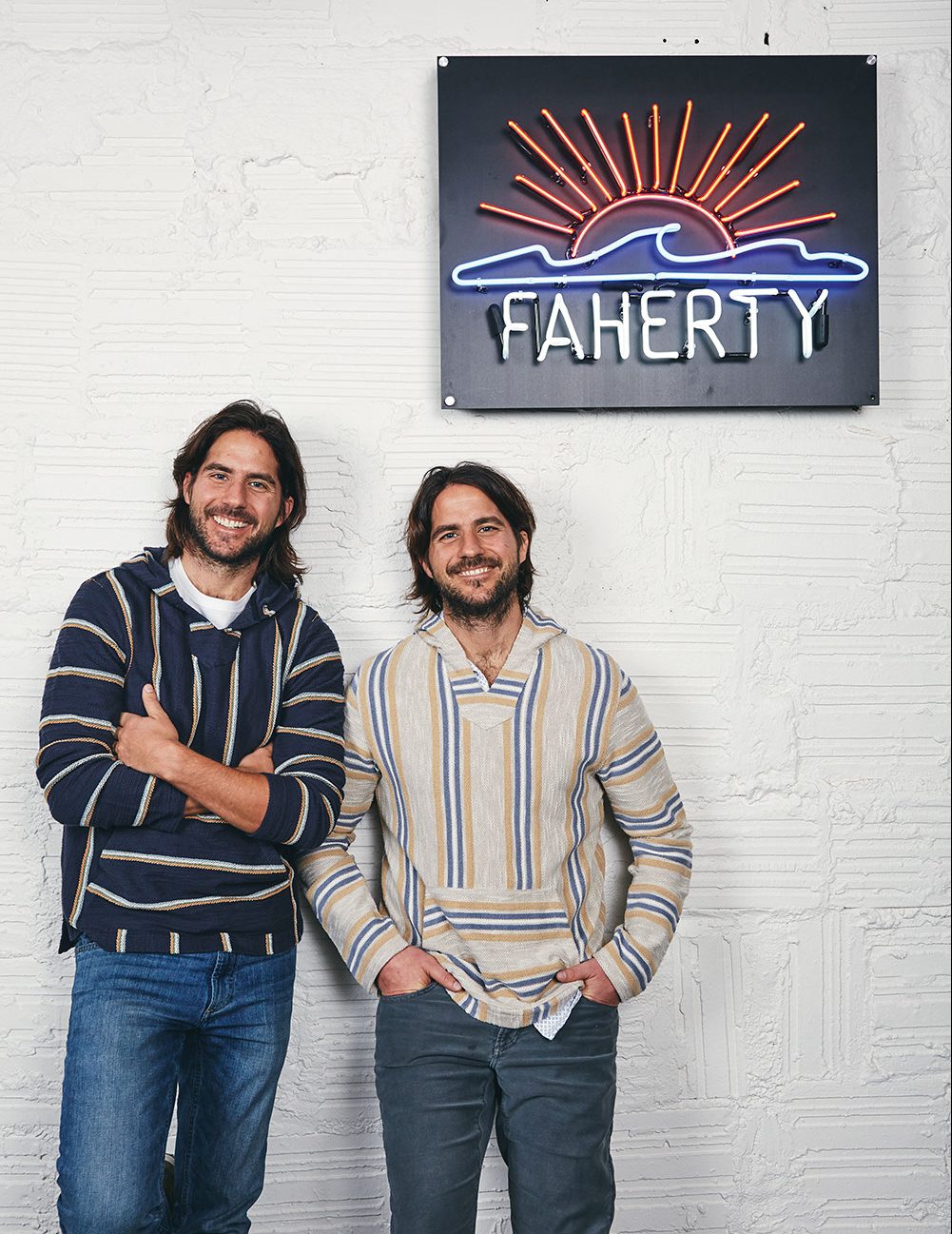
STORY BY JANET MOWAT ✷ PHOTOGRAPHS BY DAVID ENGELHARDT
When you throw on a piece from Faherty’s beach-casual line of women’s and men’s clothing, their hope is that you’ll want to live in it—and they’ve put a lot of effort into making sure you can—for a very long time.
The brainchild of twin brothers Mike, a fashion designer, and Alex Faherty, who comes from the finance world—and whose wife, Kerry, rounds out the team with her legal background and counterbalancing experience running a meditation company—the family business launched in 2013 with a “beach house on wheels” that grew into a NYC brick-and-mortar a year later.
Since then, they’ve opened shops from Boston to San Diego, and their goods are available at retailers from coast-to-coast and beyond—think beachy locales like Bermuda and Hawaii. That’s a success story. But it’s when you visit a Faherty retail store—thoughtfully laid out by Alex and Mike’s mother, an interior designer—that you really feel the ethos of the brand: It’s what’s inside that counts.
And that’s no accident: Mike Faherty, Chief Creative Officer, is very happy to obsess over the details that make good things better. As a young designer at Ralph Lauren, he got to travel and work directly with fabric mills to develop the textiles that would become the backbone of a given collection. “When I was 24, I was on a plane to Hong Kong and it came to me quickly—everything we do is from a fabric perspective,” he says.
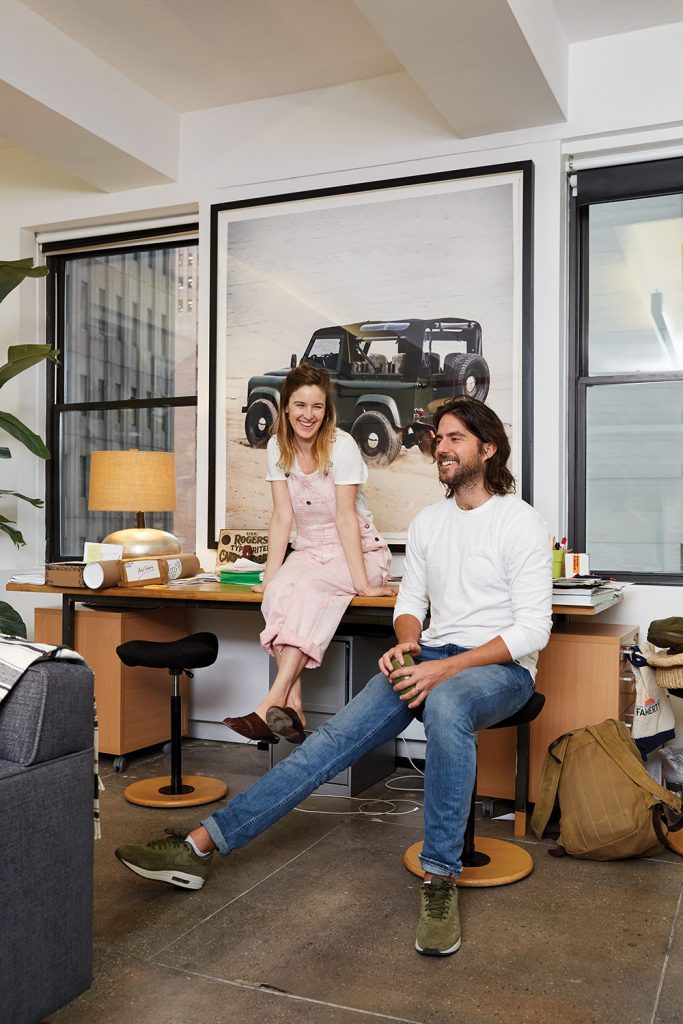
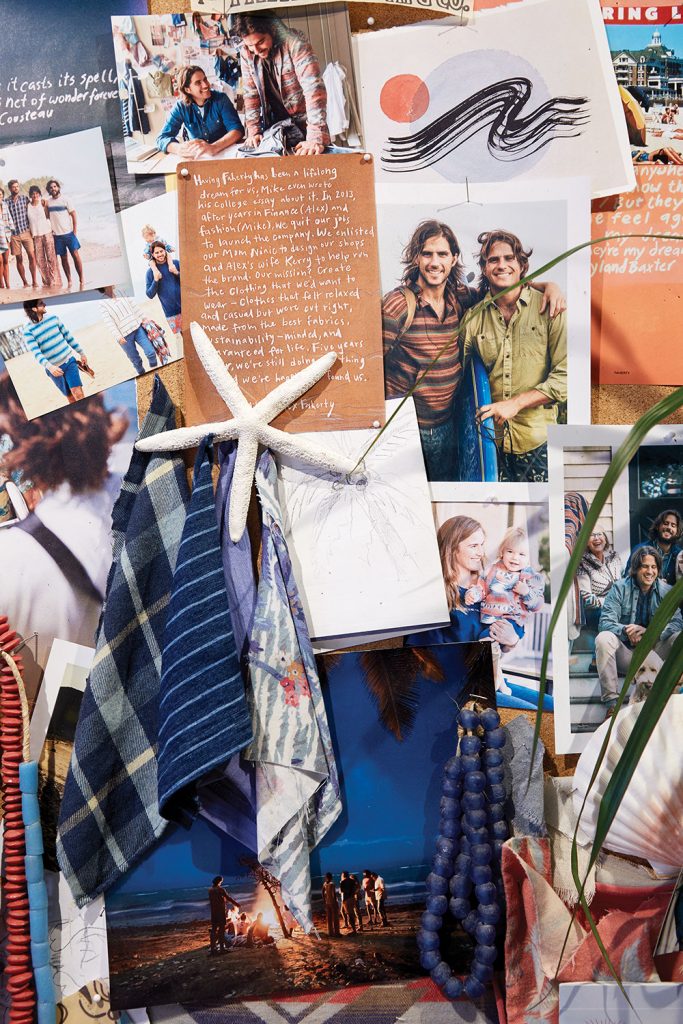
vibe of the Faherty family and brand.
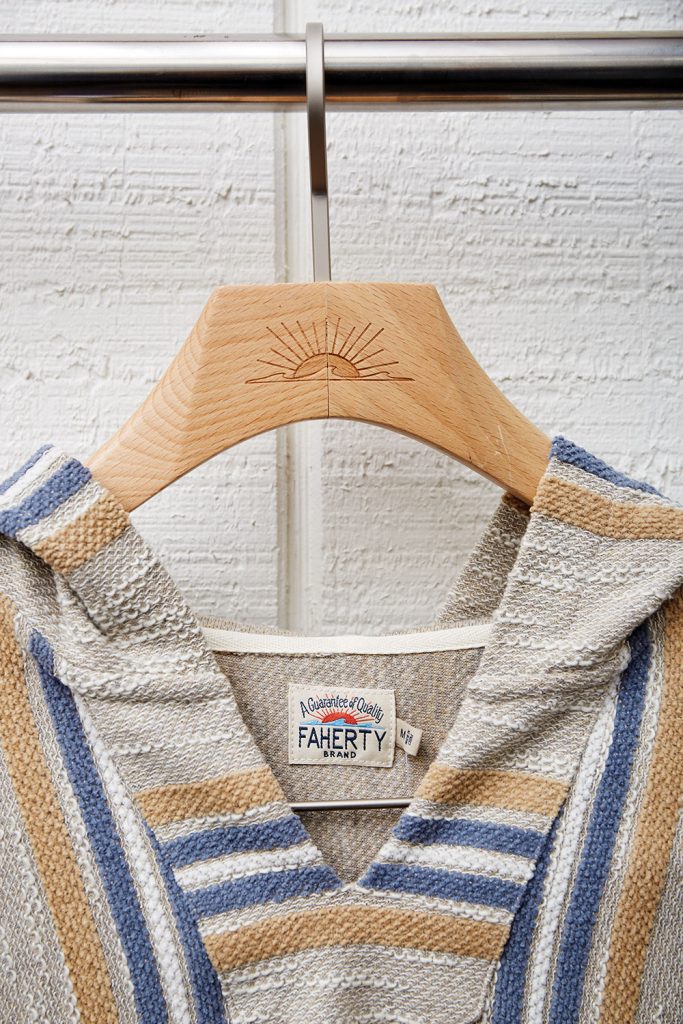
He carried that notion with him when he left that job after five years to pursue a dream, traveling the globe on his own dime to source inspiring textiles and setting up a 250-square-foot studio in Manhattan where he could start putting his design and fabric ideas to work, testing what would become Faherty’s first line.
Eight years later, he’s still at it, only on a much bigger scale. He likens himself to a chef who ensures the quality of his dish by sourcing each ingredient. “If you make your own fabric,” Mike says, “you can understand what the result will be.”
Accordingly, he continues searching for his version of the best—and most sustainable—ingredients, and then works to weave them into garments that will likely become the first thing people reach for when they’re getting dressed. “I want our customer to have that ‘wow’ experience when they touch our fabric, and to fall in love with pieces because the different fabric qualities make them so versatile.”
Take, for example, one of their best-sellers, prophetically called the Legend Sweater Shirt, a tailored version of the classic plaid button-down that likely appears at least once in every closet in the country. The knitted Faherty incarnation “is like if a shirt and a sweater had a baby,” says Mike. You can bend, twist and reach without feeling constricted or ripping a seam. As promised, its knitted polyester-viscose-spandex blend feels great to the touch. But wait, you ask, is polyester eco-friendly? Well, it can be. In testing durable, reliable fabric ingredients, Mike says, “we went from poly to sugarcane, but then turning sugarcane into textiles uses more energy, so then we found a new poly that could be conventionally recycled…it’s a fluid thing.”
For another product line, they tested making buttons from nuts, but the buttons kept breaking. “Sometimes the all-natural solution isn’t the best solution,” Mike says. But this brand was born at the beach after all, so when it comes to swimwear and related products, Faherty did a deep sustainable dive, fashioning their designs from recycled plastic bottles. It puts a new spin on getting plastic out of the ocean.
And although they might just chalk it up to being the right thing to do, they extend that consideration to the environment at large. “We’re students of the world who travel a lot,” Mike says, “and when we see destruction firsthand, we know change is up to us as the next generation of clothing brands.”
“When you know better, you do better, and we’re always looking to know more.”
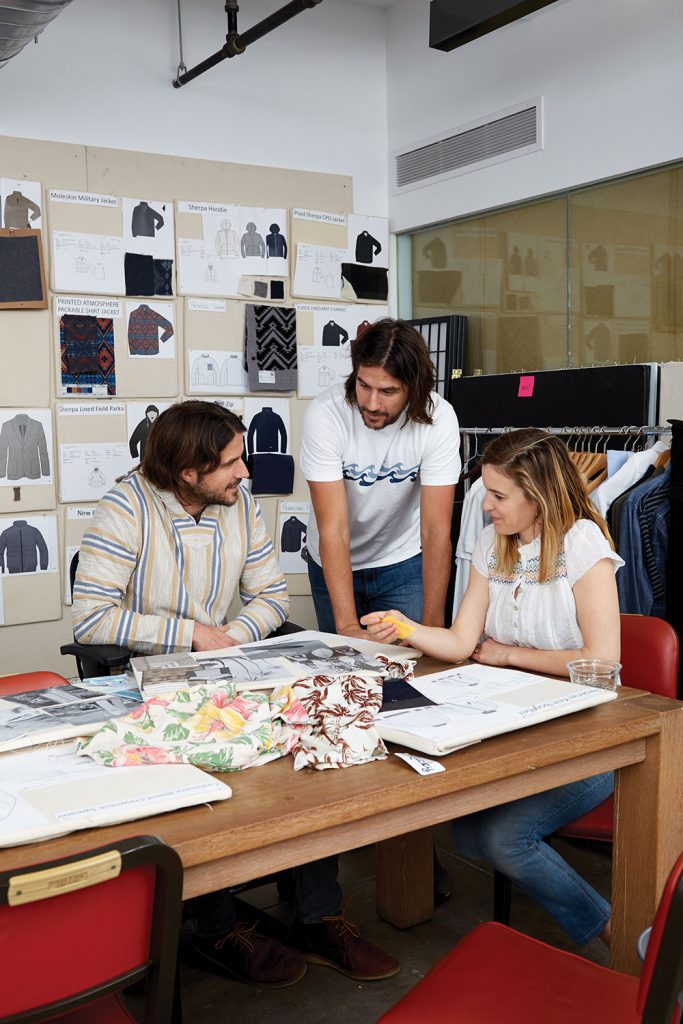
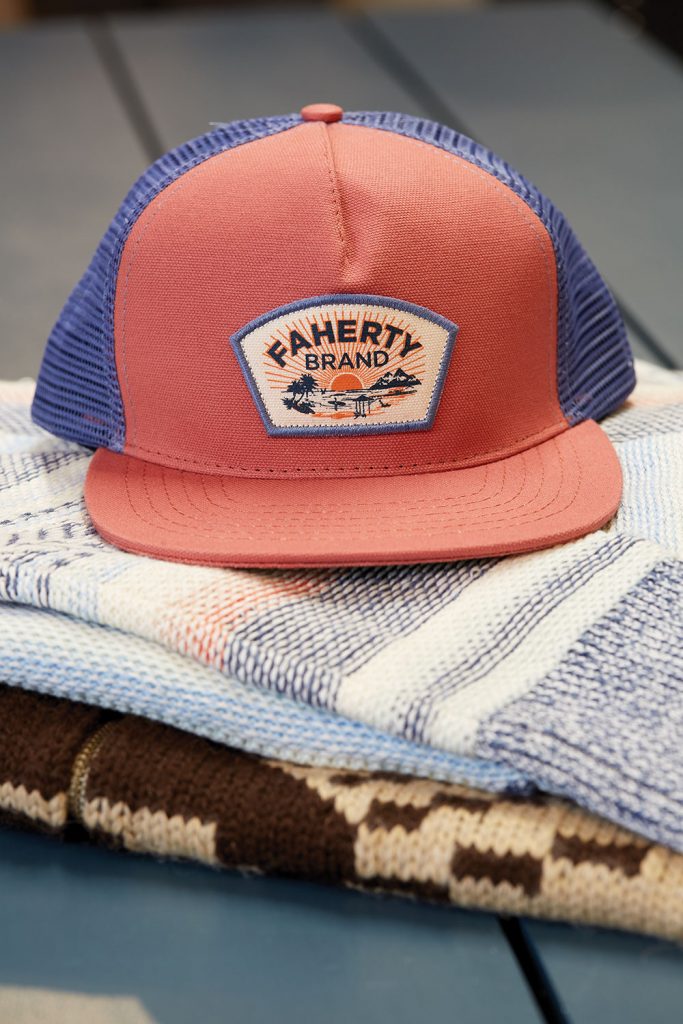
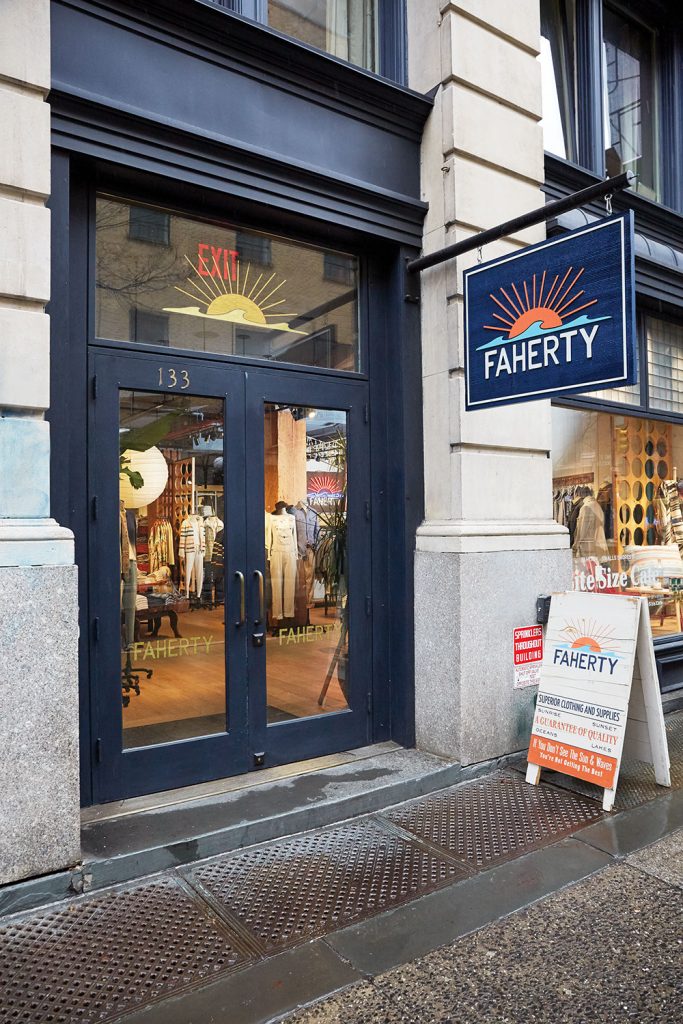
To that end, Faherty has partnered with Surfrider, a foundation dedicated to preserving the health of our beaches and oceans, and does collaborations with indigenous communities around the country. They are also a member of Bluesign, an organization that assesses supply-chain toxicity.
But Mike reports that technology routinely lags behind their product development, so they regularly review every design choice they make, from the impact of certain dyes to using recycled and organic fabrics to the longevity of natural versus man-made materials. “The time that we spend to perfect the product is to ensure that consumers have clothes that last,” says Mike.
To back up that pledge, they offer a repair program to ensure that things can live in your closet for a very long time. “Clothing and fabric is what I’ve been put on earth to care about,” Mike says. “It’s the pride of not only making the product the best it can possibly be, but doing it the best way we can. When you know better, you do better, and we’re always looking to know more.”
Faherty is also a member of 1% for the Planet, where they donate 1% of their sales (regardless of whether or not they are profitable) back to nonprofit environmental organizations.
Part of doing better means that there’s no fast fashion here. Attention to detail takes time—at least a year from concept to finished product—and of course you need some help along the way. It helps when that comes from someone who’s been with you, literally, from the start: Your twin brother.
The pair had the dream to run their own business since back in their teenage surfing days on the Jersey Shore, and so Alex mirrors his brother’s design expertise with his own in business and finance, essential to creating a healthy ecosystem for any enterprise. “I think starting your own business can be isolating,” observes Kerry, “and so it creates a safe container to be able to have partners that you can trust.”
She notes that combining their unique skill sets has helped them to holistically grow. “Mike will never let the design be compromised,” she says. “I’m always thinking about giving back and mindfulness. Alex makes sure we are financially sustainable. We want to make sure the 100-some people [tending to design, wholesale and customer service from their lower-Manhattan office] love to come to work, and that we can pay them. We spend a lot of time thinking about our people—and customers.”
“We’re students of the world who travel a lot, and when we see destruction firsthand, we know change is up to us as the next generation of clothing brands.”
